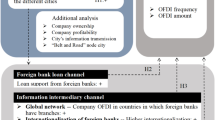Abstract
The Umbrella Partnership REIT (UPREIT) structure has become the dominant form of organization for U.S. REITs. We examine the utility of this corporate structure from a new perspective, finding evidence that convertible securities issued by UPREITs in payment for properties acquired from private sellers often function as instruments of corporate control, aligning the interests of new executives acquired in the transaction with those of the purchasing REIT’s shareholders. We also find evidence that these financial arrangements are used to signal information regarding the firm’s future prospects. We use a sample of 53 public–private mergers 1995–2001, in which the acquirer is a publicly traded REIT. We find that wealth effects from central managerial changes are positively related to the degree to which payment takes the form of convertible equity units of UPREIT subsidiaries, and to the minimum lock-up period for those units prior to conversion. The positive effects of longer lock-ups are evidence that financing structure can be used to reduce agency and information costs related to managerial restructuring in public–private mergers.
Similar content being viewed by others
References
Buzz, B. (2001). “REITs—US Offers Lessons to Potential Asian Markets,” Published by Jones Lang LaSalle Hotels, http://www.joneslanglasallehotels.com/JLLH/JLH.nsf.
Campbell, R., and C. F. Sirmans. (2002). “Policy Implications of Structural Options in the Development of Real Estate Investment Trusts in Europe: Lessons From American Experience,” Journal of Property Investment and Finance 20(4), 388–405.
Campbell, R., C. Ghosh, and C. F. Sirmans. (2001). “The Information Content of Method of Payment in Mergers: Evidence From Real Estate Investment Trusts (REITs),” Real Estate Economics 29, 361–387.
Cannon, S. E., and S. C. Vogt. (1995). “REITs and Their Management: An Analysis of Organizational Structure, Performance and Management Compensation,” Journal of Real Estate Research 10(3), 297–317.
Carnachan, S. (2003). “Real Estate Investment Trusts in Asia,” AsiaLaw (June).
Chang, S. (1998). “Takeovers of Privately Held Targets, Methods of Payment, and Bidder Returns,” Journal of Finance 53, 773–784.
Clayton, J., and G. MacKinnon. (2000). “Measuring and Explaining Changes in REIT Liquidity: Moving Beyond the Bid-Ask Spread,” Real Estate Economics 26, 89–115.
Courteau, L. (1995). “Under-Diversification and Retention Commitments in IPOs,” Journal of Financial and Quantitative Analysis 30, 487–517.
Datta, S., M. Iskander-Datta, and K. Raman. (2001). “Executive Compensation and Corporate Acquisition Decisions,” Journal of Finance 56, 2299–2336.
Fama, E., and M. Jensen. (1983). “Separation of Ownership and Control,” Journal of Law and Economics 26, 301–325.
Gelos, R. G., and S. J. Wei. (2002). “Transparency and International Investor Behavior,” International Monetary Fund Working Paper.
Grant, J. J. (1994). “Tax Planning for Umbrella Partnership REITs,” Journal of Real Estate Taxation 21(3), 195–227.
Hubbard, G. R., and D. Palia. (1995). “Executive Pay and Performance: Evidence From the U.S. Banking Industry,” Journal of Financial Economics 39, 105–130.
Jensen, M., and W. H. Meckling. (1976). “Theory of the Firm: Managerial Behavior, Agency Costs, and Capital Structure,” Journal of Financial Economics 3, 305–360.
Leland, H., and D. Pyle. (1977). “Informational Asymmetrics, Financial Structure, and Financial Intermediation,” Journal of Finance 32(2), 371.
Liu, A. (ed.). Asia Pacific Transparency Index 2004, Chicago, USA: Jones Lang Lasalle.
Mehran, H. (1995). “Executive Compensation Structure, Ownership, and Firm Performance,” Journal of Financial Economics 38, 163–184.
Mehran, H., G. Nogler, and K. Schwartz. (1998). “CEO Incentive Plans and Corporate Liquidation Policy,” Journal of Financial Economics 50, 319–350.
Mikkelson, W., and M. Partch. (1988). “Withdrawn Security Offerings,” Journal of Financial and Quantitative Analysis 23, 119–133.
Morck, R., A. Shleifer, and R. Vishny. (1988). “Management Ownership and Market Valuation: An Empirical Analysis,” Journal of Financial Economics 20, 293–316.
Morck, R., A. Shleifer, and R. Vishny. (1990). “Do Managerial Objectives Drive Bad Acquisitions?” Journal of Finance 45, 31–48.
Morgan, A., and A. Poulsen. (2001). “Linking Pay to Performance-Compensation Proposals in the S&P 500,” Journal of Financial Economics 62, 489–523.
Napoli, J. P., and J. F. Smith. (1999). “Emerging Issues in UPREIT Transactions,” Journal of Real Estate Taxation 26(3), 187–212.
Rubin, B., A. McIntosh, and J. Forrest. (1999). “Doing a Deal with a REIT from the Property Owner’s Perspective,” Journal of Real Estate Taxation 27(1), 15–57.
Sinai, T., and J. Gyourko. (2004). “The Asset Price Incidence of Capital Gain Taxes: Evidence from the Taxpayer Relief Act of 1997 and Publicly-Traded Real Estate Firms,” Journal of Public Economics 88(7/8), 1543–1566.
Smith, C., and R. Stulz. (1985). “The Determinants of Firms’ Hedging Policies,” Journal of Financial and Quantitative Analysis 20, 391–406.
Tehranian, H., N. Travlos, and J. Waegelein. (1987). “The Effect of Long Term Performance Plans on Corporate Sell-off Induced Abnormal Returns,” Journal of Finance 42, 933–942.
Author information
Authors and Affiliations
Corresponding author
Rights and permissions
About this article
Cite this article
Campbell, R.D., Ghosh, C. & Sirmans, C.F. Value Creation and Governance Structure in Reit Mergers. J Real Estate Finan Econ 31, 225–239 (2005). https://doi.org/10.1007/s11146-005-1373-x
Published:
Issue Date:
DOI: https://doi.org/10.1007/s11146-005-1373-x




